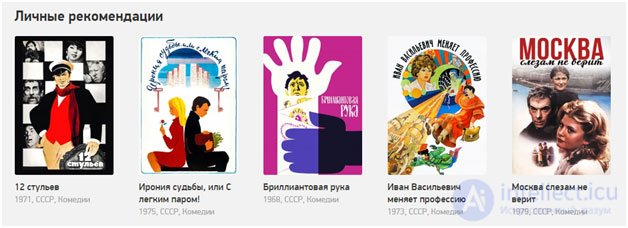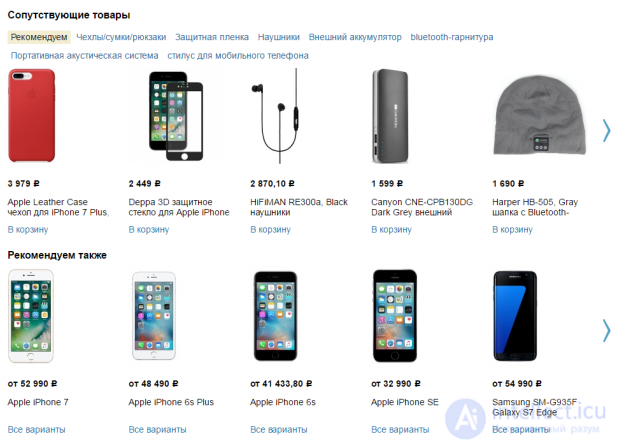Lecture
In any area where content is offered to users in one form or another, the recommendations of the new material are an essential element of the system. Indeed, an increase in sales of even a few percent can bring millions of dollars.
Plan:
Let's start with a simple one: what are recommender systems in general, and how they are. Probably everyone has already come across them on the Internet. The first example is movie recommendation systems.

On imdb.com, users can rate movies on a ten-point scale. Ratings are aggregated, it turns out the average movie rating. On the same site there is a block with recommendations for a specific user. If I went to the site and rated several films, imdb will be able to recommend me some more films. A similar block is on Facebook.
Something similar, but only for music, does last.fm. He recommends me artists, albums, events that I should go to. Pandora service is a personal radio that gradually adapts to the user based on his ratings, and as a result, only those tracks that he likes play.
Another well-known area is product recommendation. In the picture below we have, of course, Amazon. If you bought something on Amazon, you will be hunted with additional offers: similar products or accessories. This is also good for users (they do not need to look for these products on their own), and of course, this is good for the store itself.

We have listed three categories, but in fact they are much more: places on the map, news, articles, websites, concerts, theaters, exhibitions, videos, books, applications, games, travel, social connections and much more.
There are two main types of recommender systems. Of course, there are more of them, but today we will consider these and especially the collaborative filtering.
Recommended concepts emerged on the Internet a long time ago, about 20 years ago. But true growth in this area occurred about 5 to ten years ago when the Netflix Prize event occurred. At that time, Netflix was not renting digital copies, but distributing VHS tapes and DVDs. For the purpose of their existence, it was quite important to increase the property of the councils. Than more correctly Netflix advises movies to its own users, with which they take more movies to metal-rolls. In accordance with this, the income of the company also increases. In 2006, they abandoned the Netflix Prize. They reported to the public admission the compiled information: approximately 100 million assessments according to a five-point scale with the prescription of the ID of the users who put them in. The members of the competition must have existed as well as it is possible to foresee more correctly, this or that assessment will set this or that user to a specific movie. The prediction property was measured by the presence of support for the RMSE metric (mean square deviation). Netflix previously had a method predicted by users with a quality of 0.9514 according to the RMSE metric. The goal existed to improve the foresight despite being used in 10% - up to 0.8563. The winner was awarded an award of $ 1,000,000. The competition lasted about 3 years. Due to the first time, the property increased by 7%, then it slowed down a little.
But at the end the two teams sent their solutions, each of which passed the threshold of 10%, the quality they had the same to within the fourth digit. In the task, over which many teams had been beating for three years, everyone decided some twenty minutes. The late team (like many others who participated in the competition) was left with nothing, but the competition itself strongly spurred development in this area.
To begin, we formalize our problem. What we have? We have a lot of users.
Comments
To leave a comment
Expert systems
Terms: Expert systems